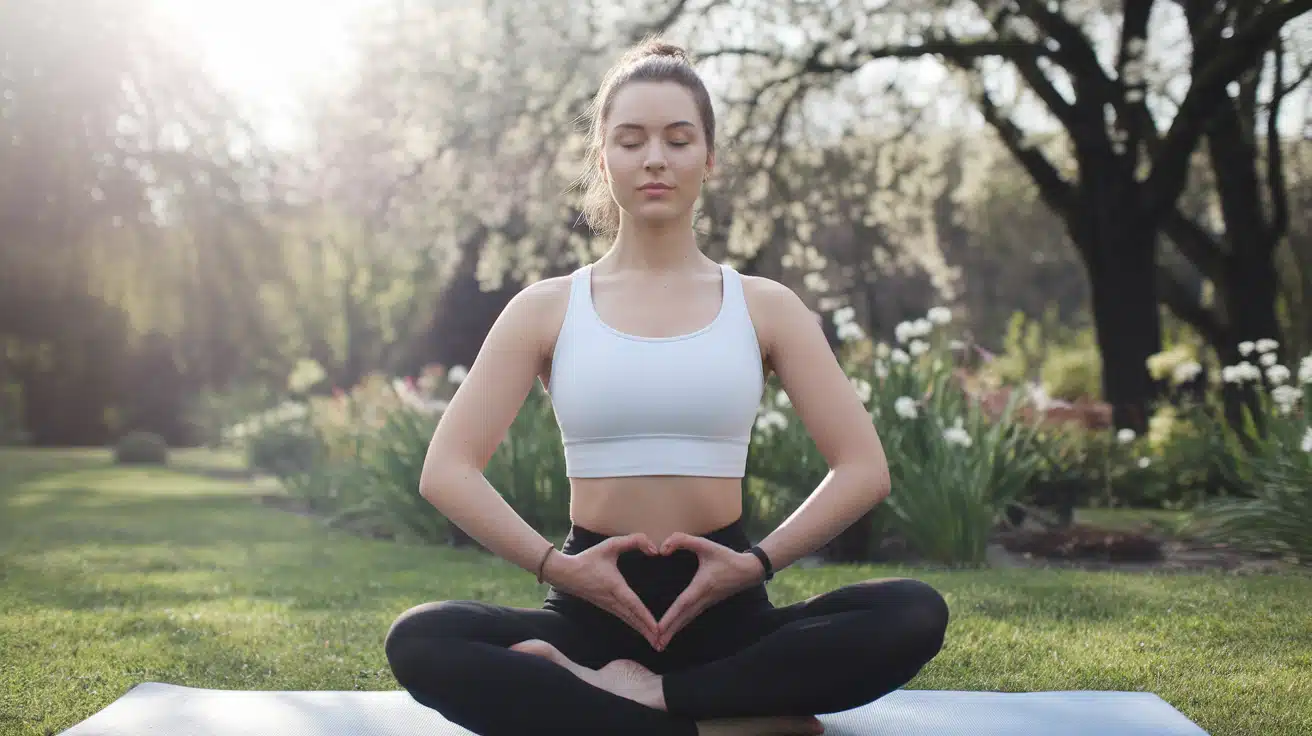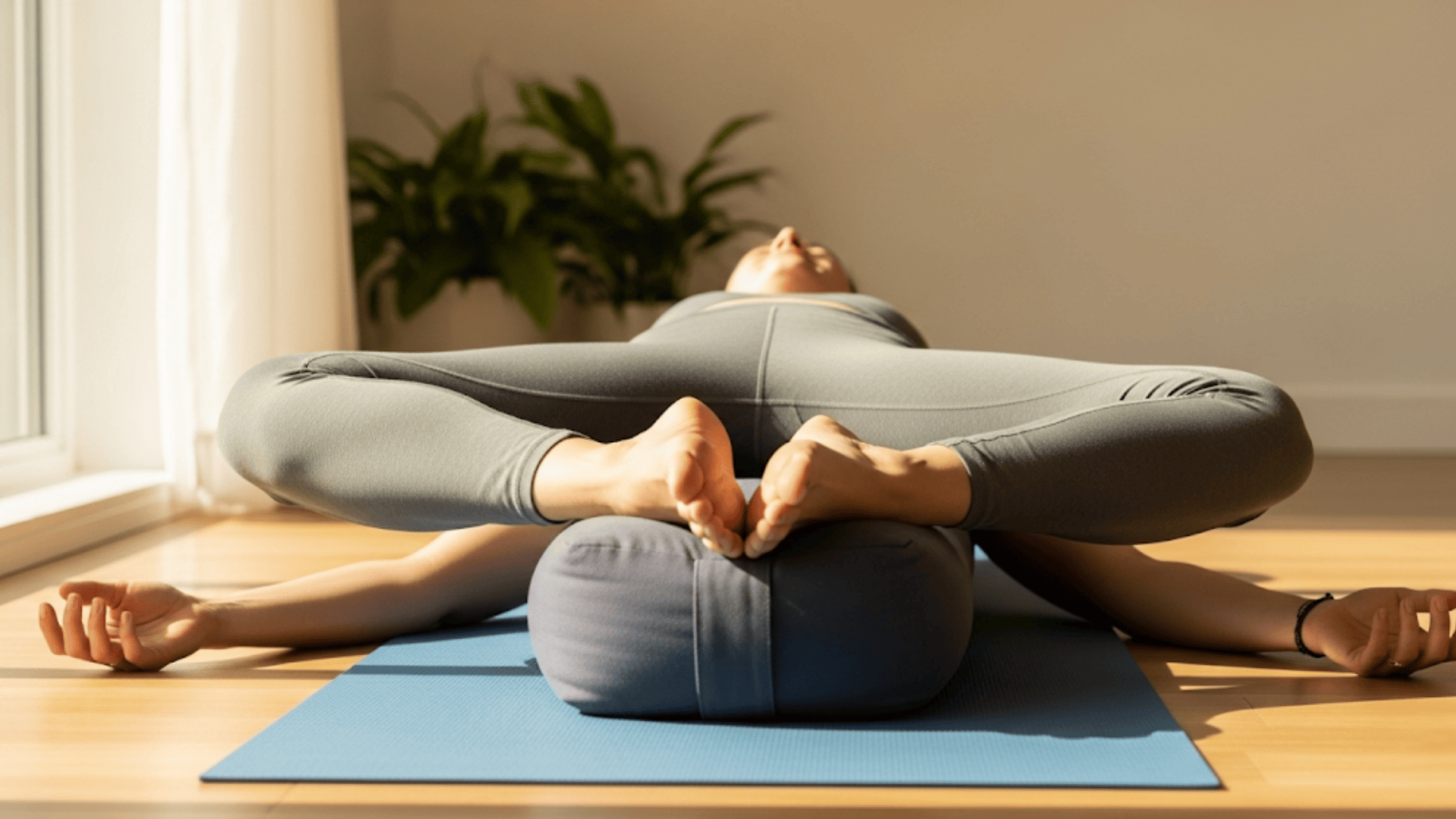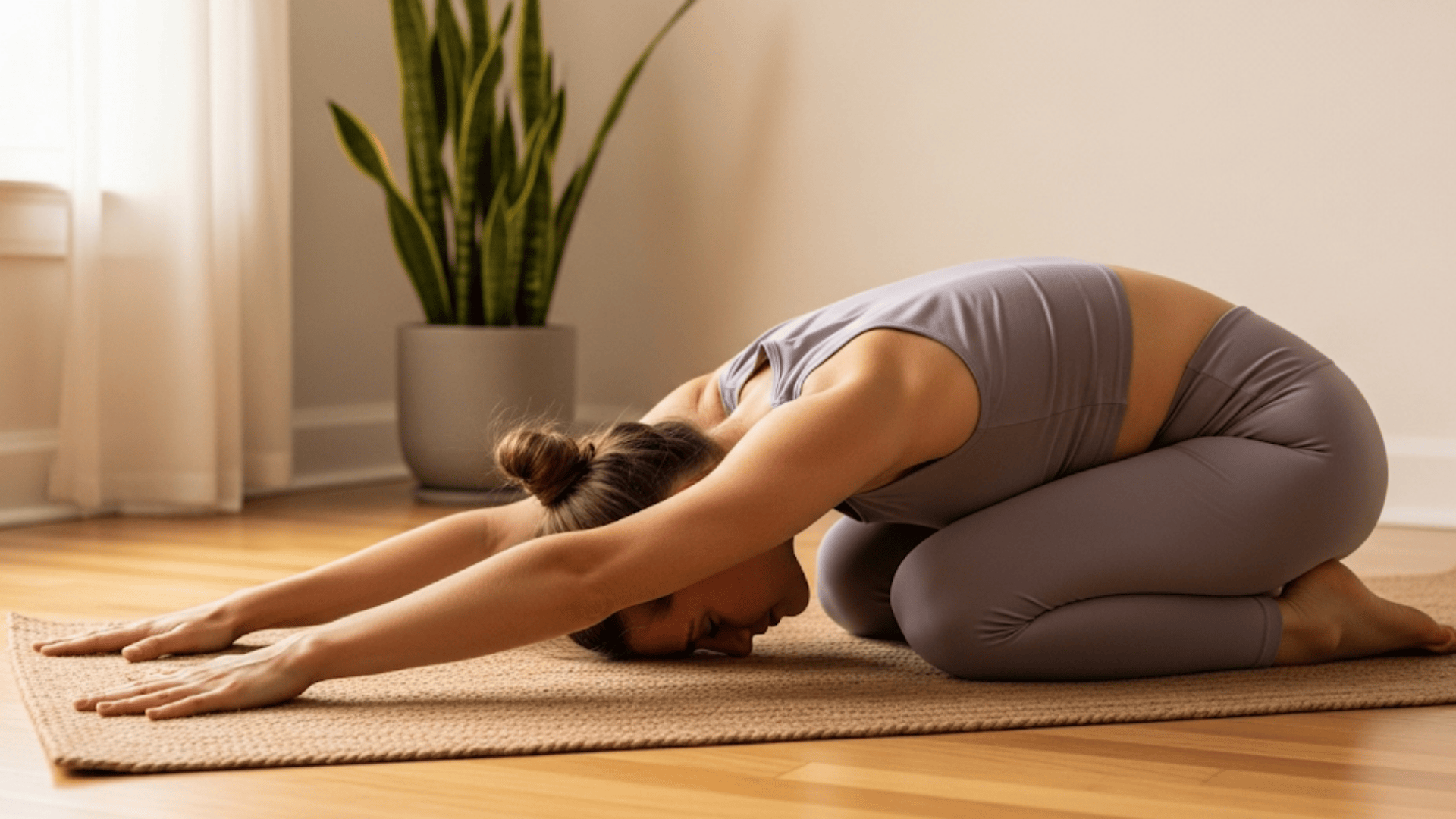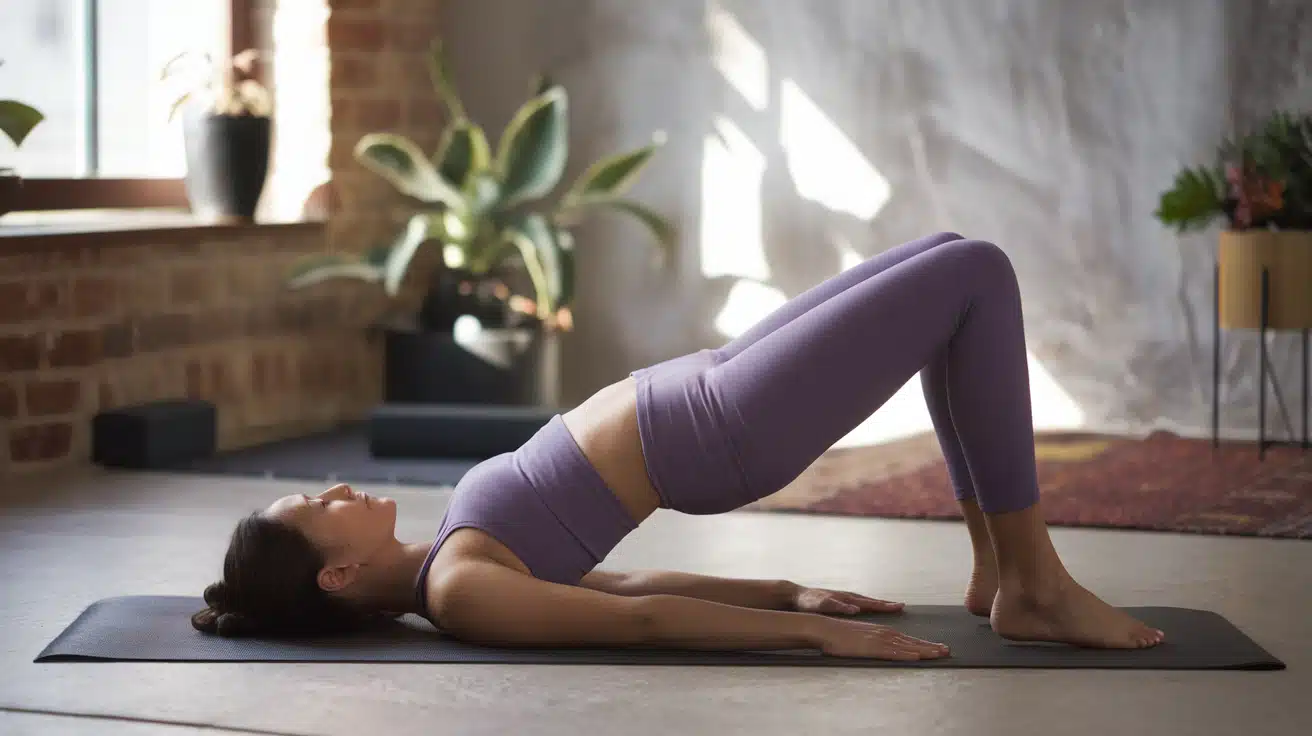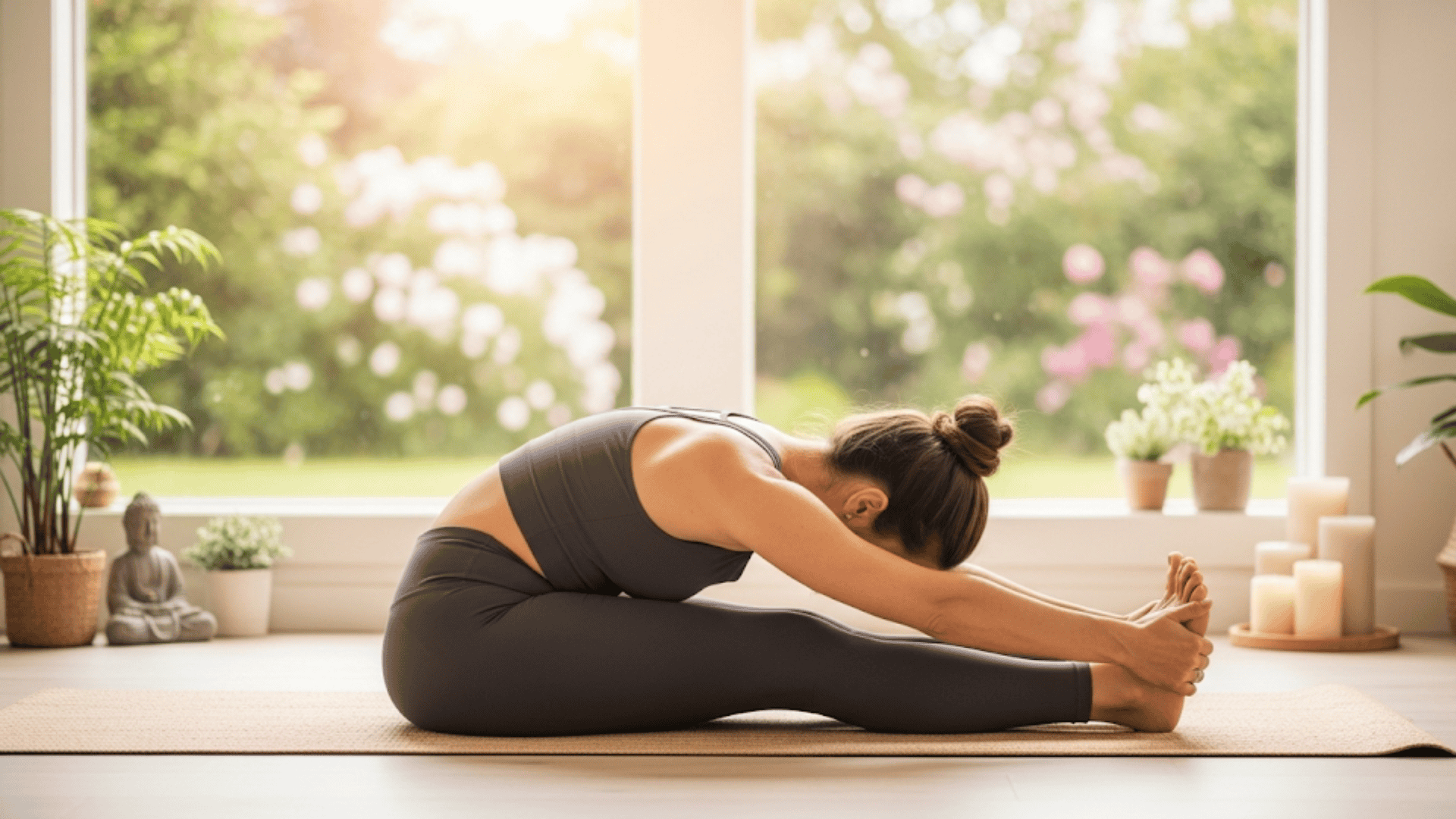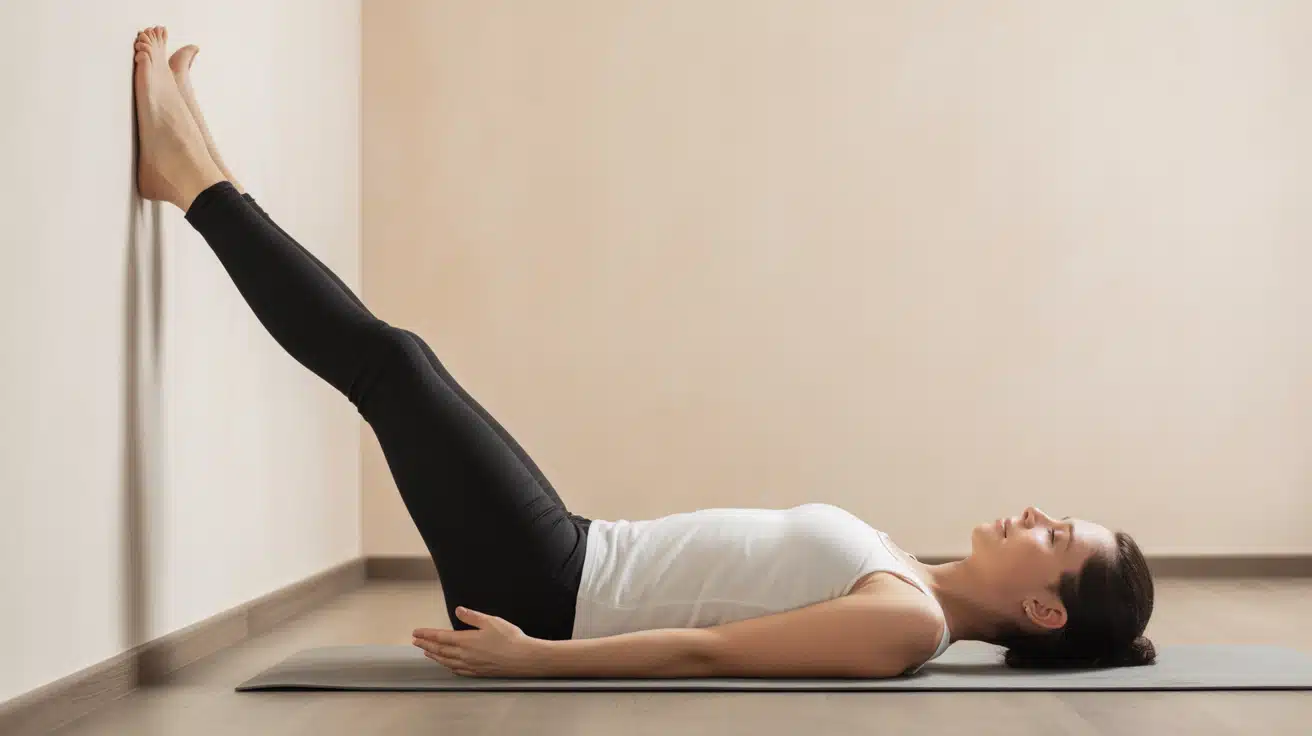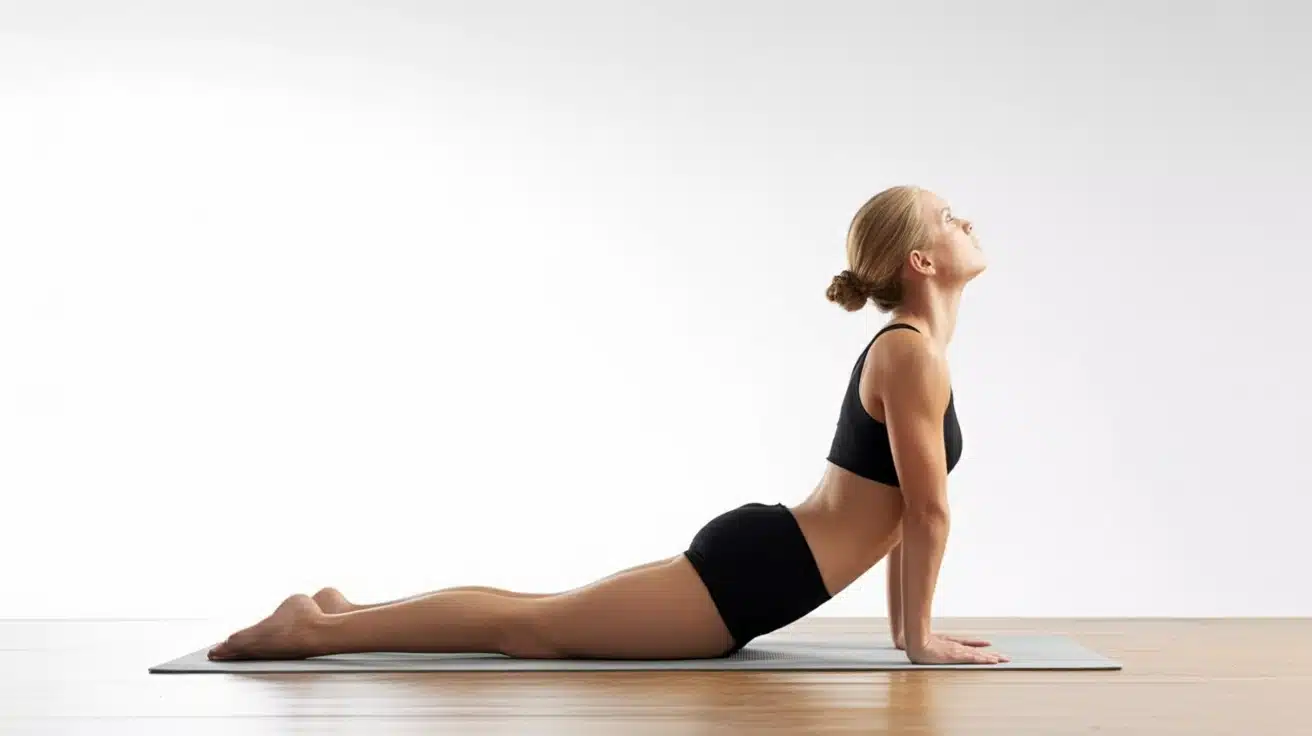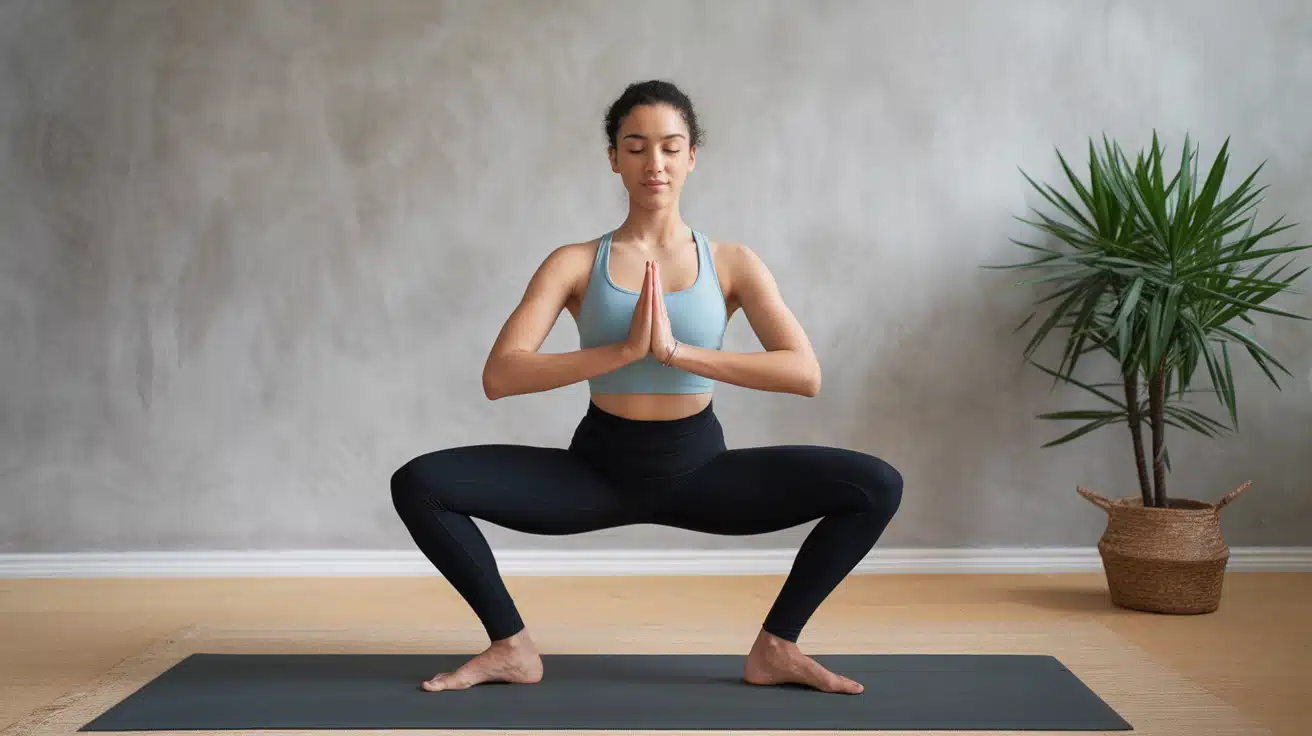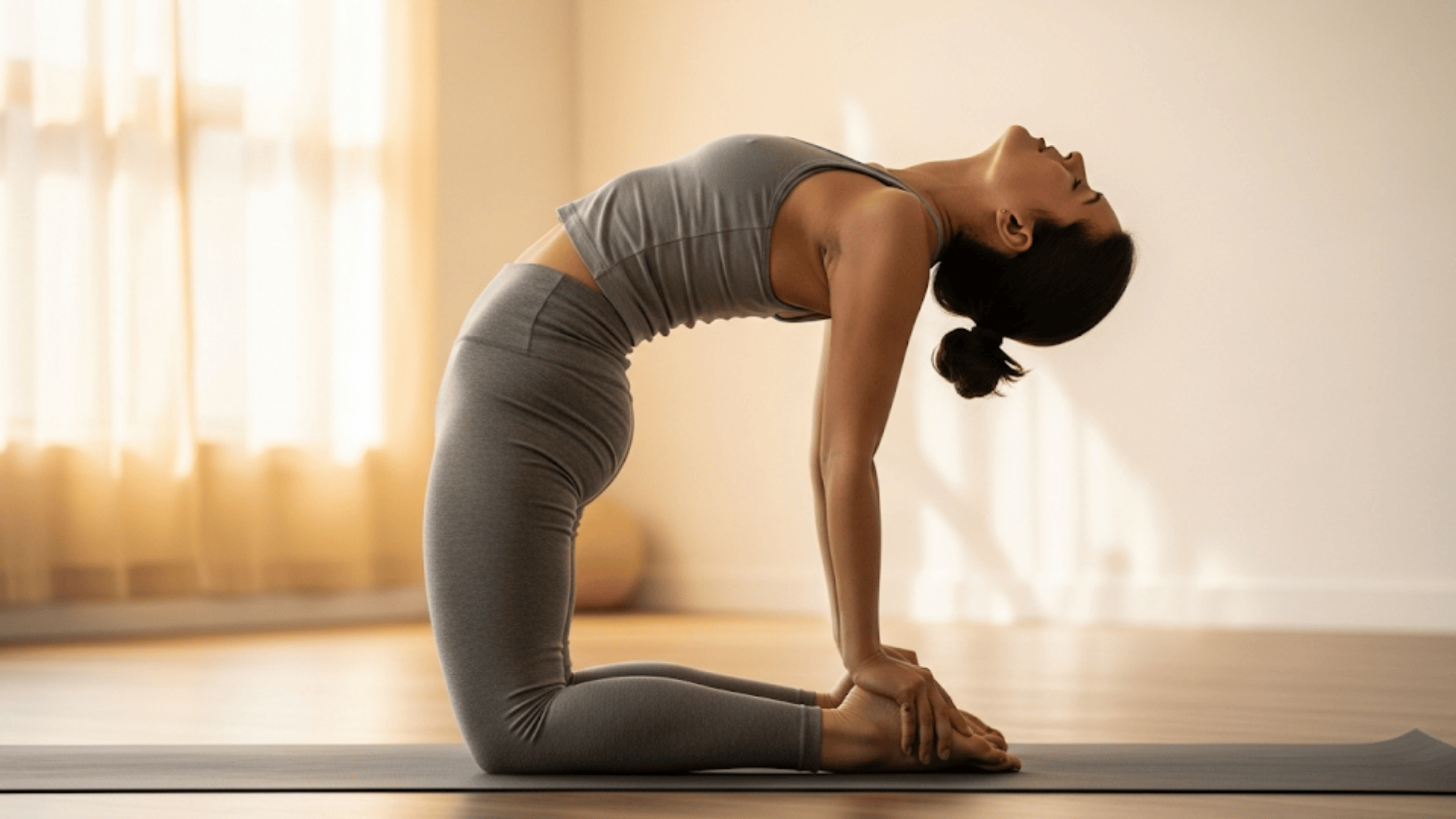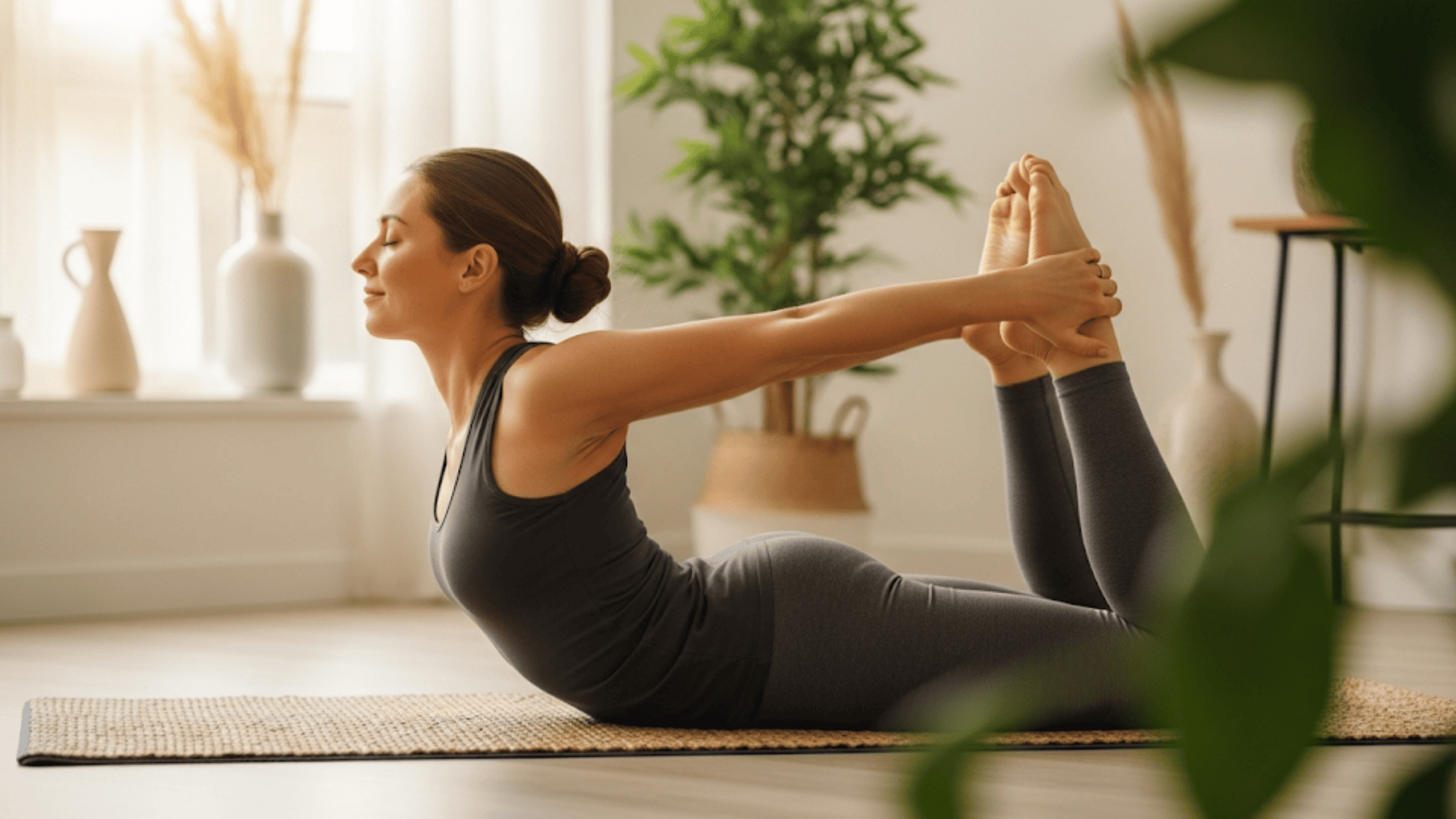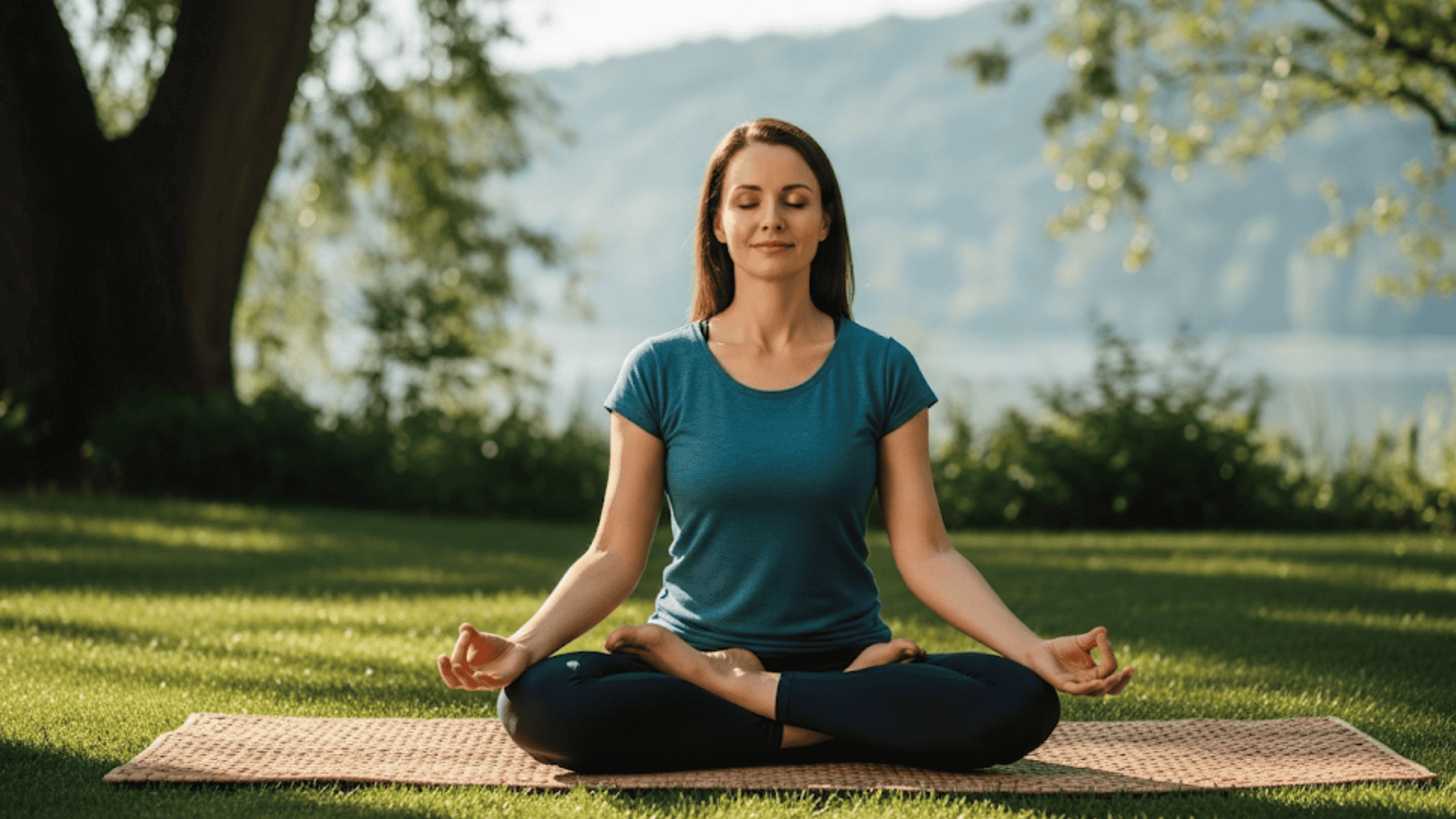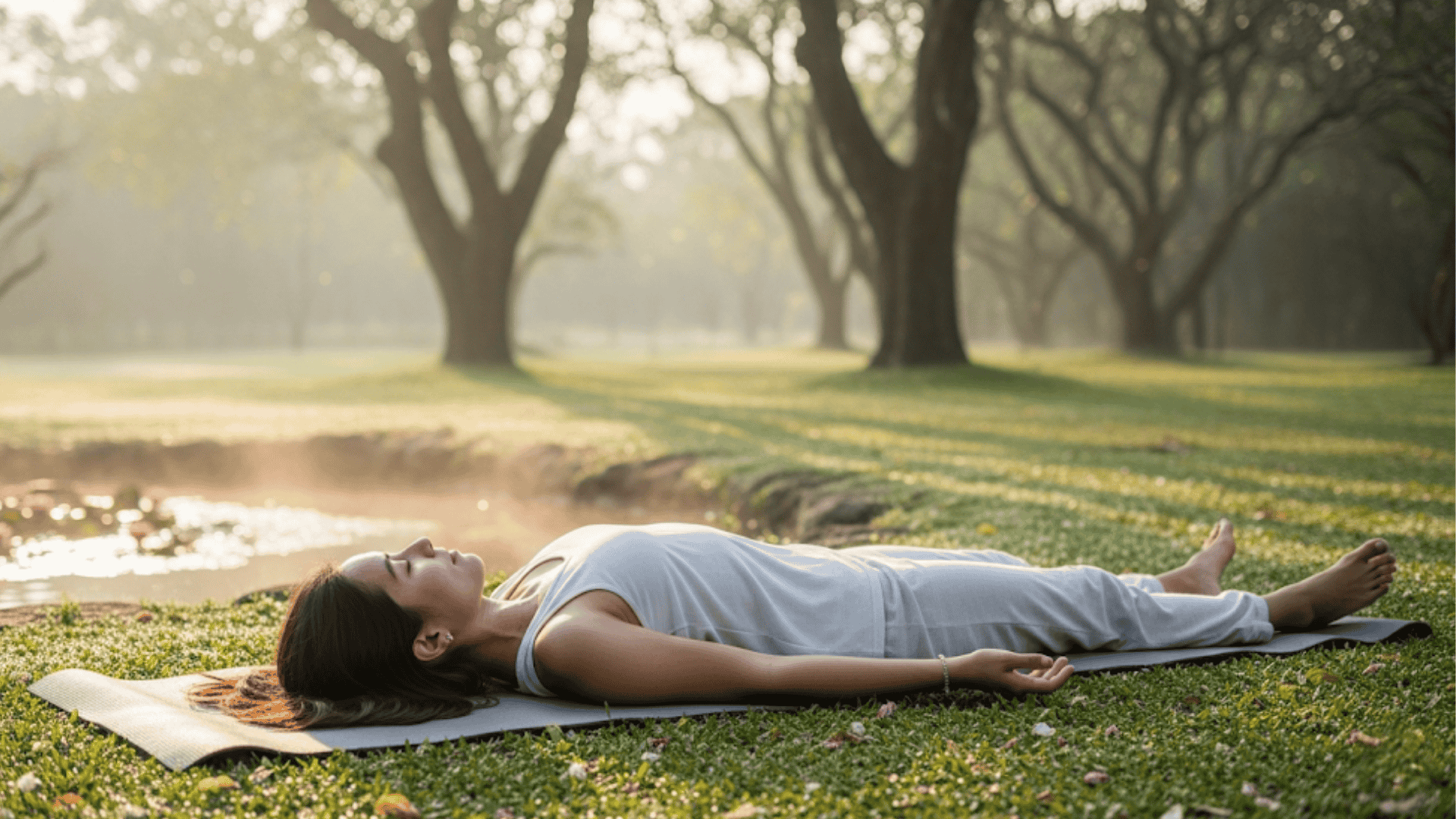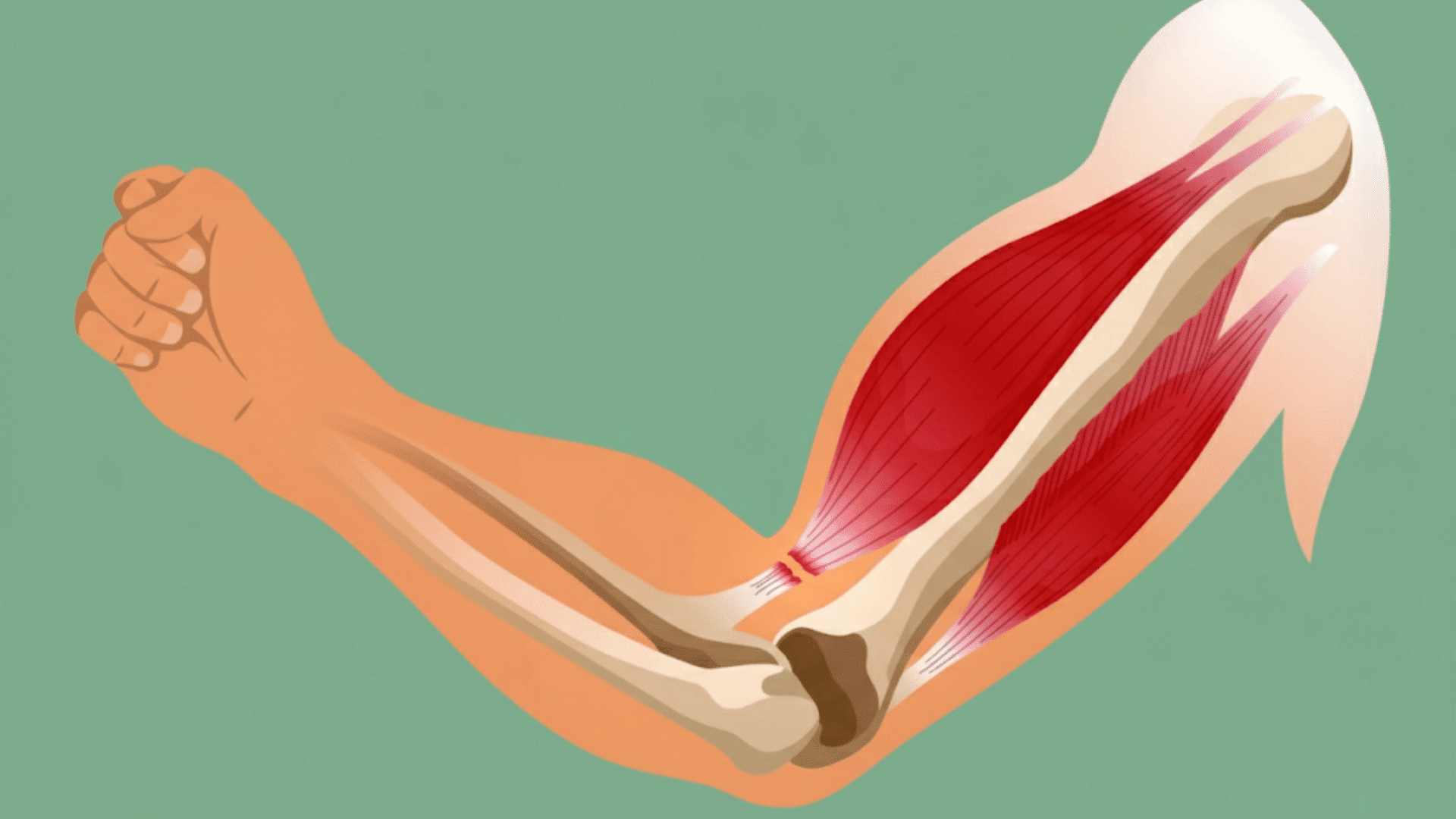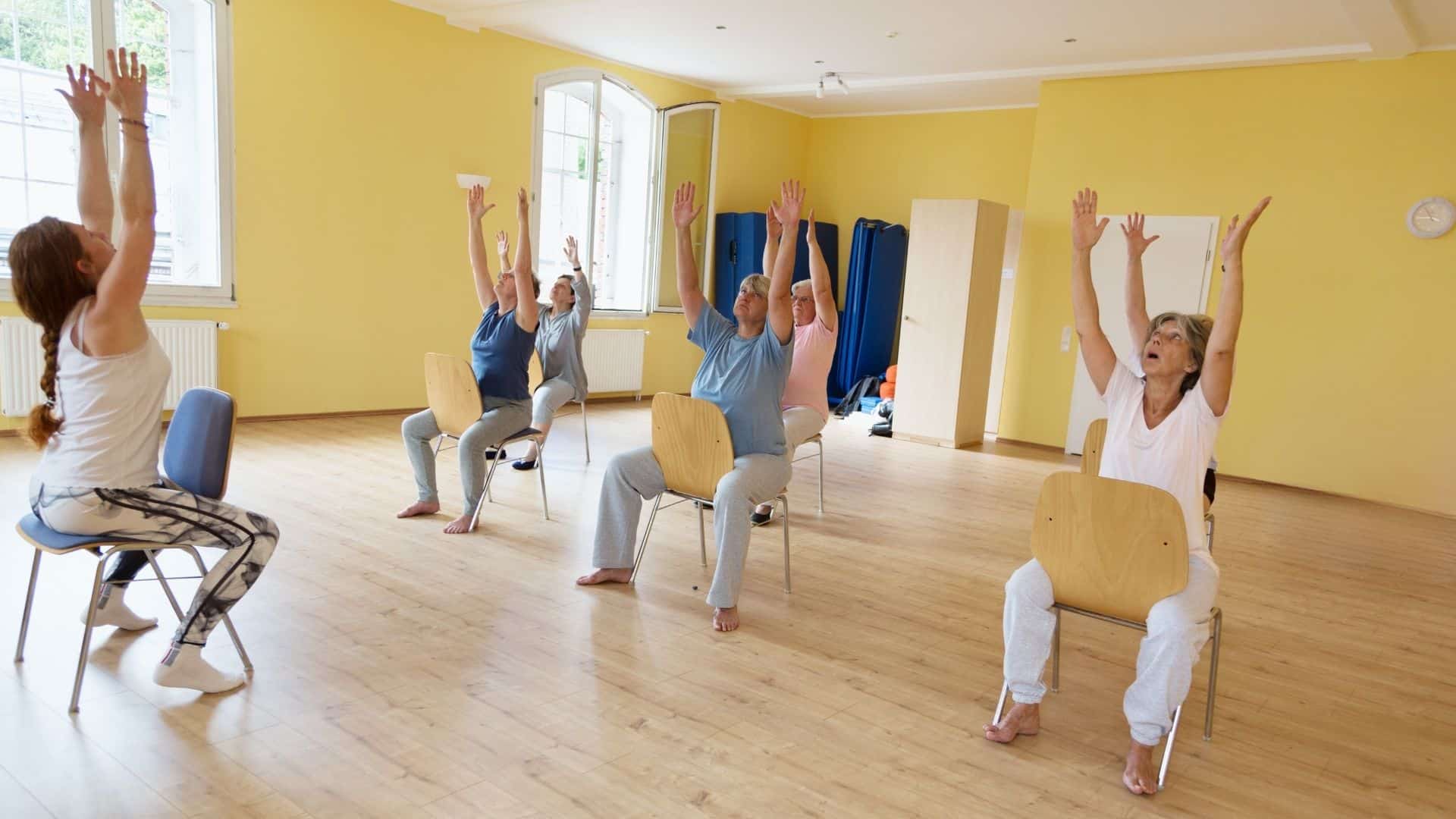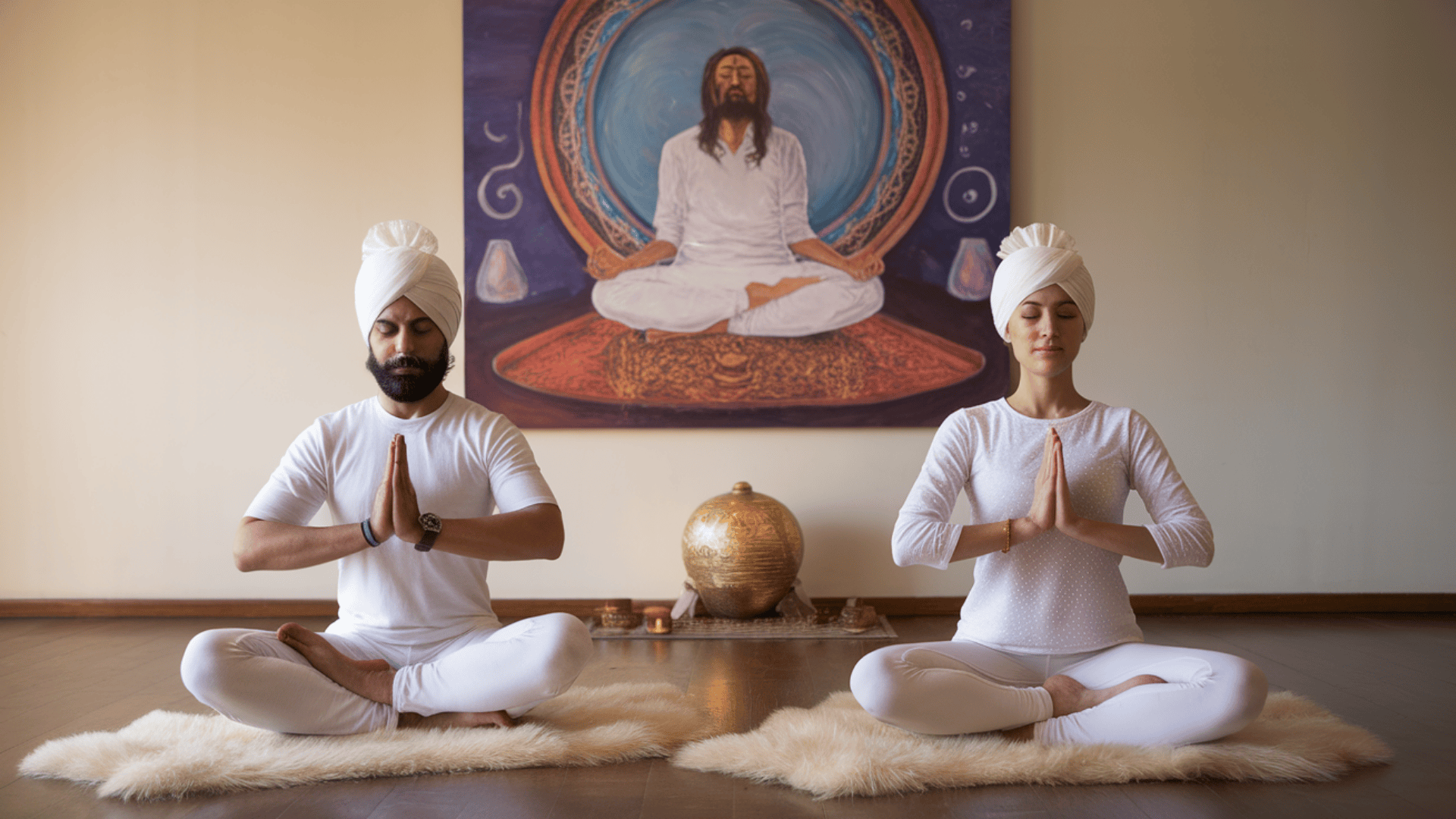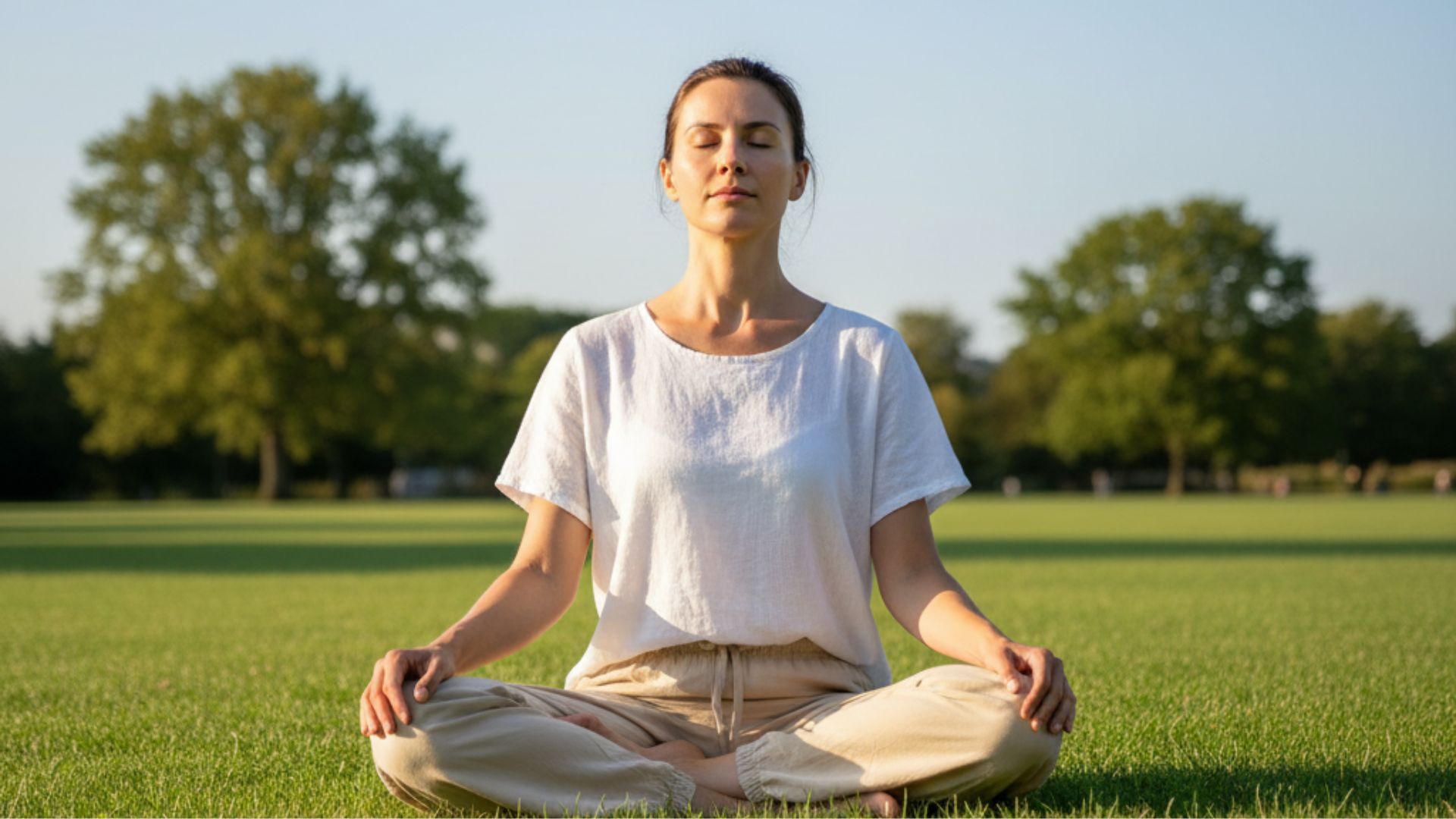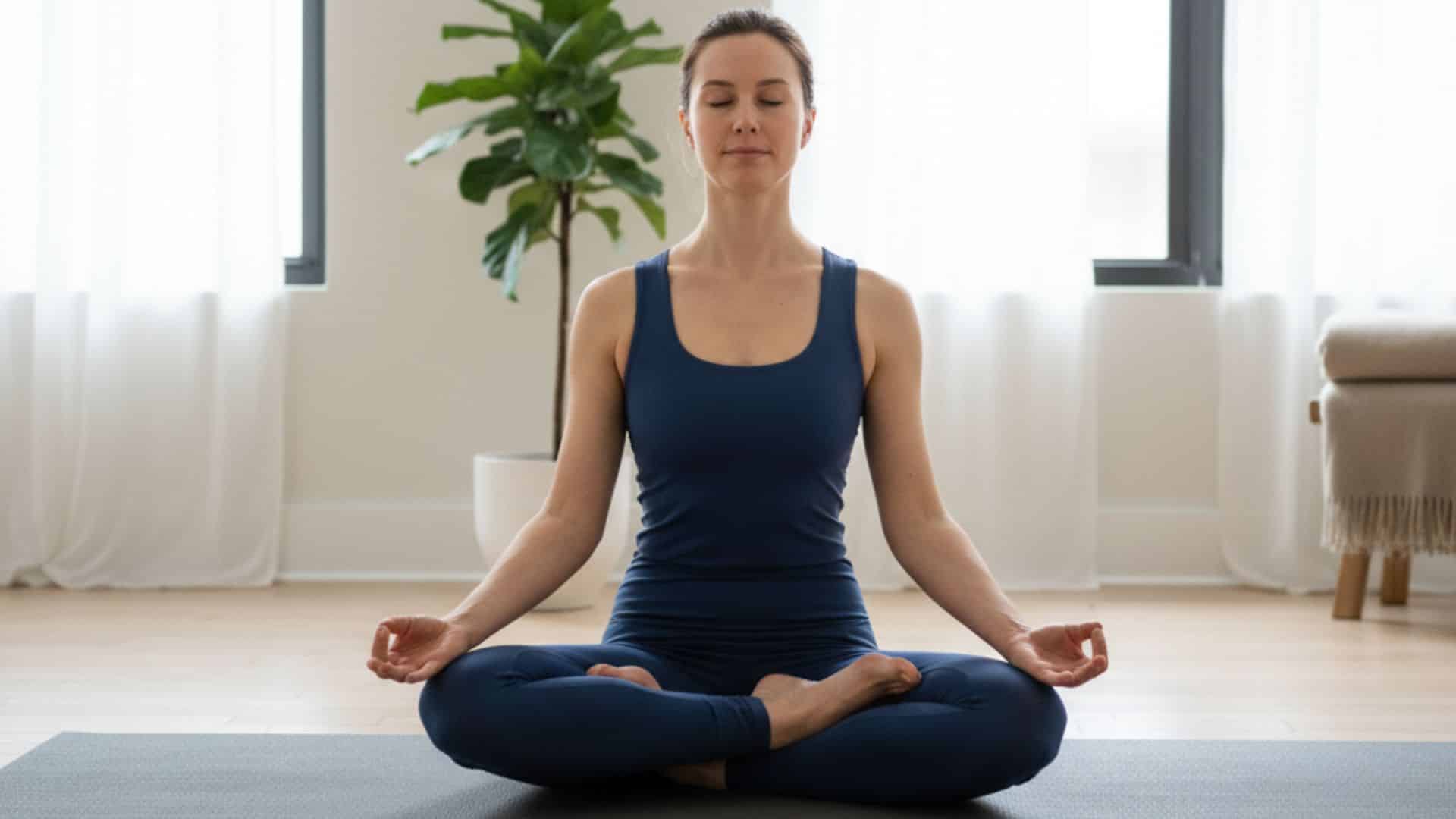Trying to conceive can feel like an uphill battle. You’ve tracked ovulation cycles, changed your diet, and maybe even consulted fertility specialists. Yet, stress continues to build, and your body feels tense and disconnected.
What if there was a gentle, natural way to support your fertility that costs nothing and requires only 20 minutes daily? Yoga offers exactly that solution.
This ancient practice helps reduce stress hormones that can interfere with conception, improves blood flow to the reproductive organs, and balances the hormones your body needs for healthy fertility. Best of all, you can start today from the comfort of your own home.
This guide will show you specific yoga poses that support fertility, along with practical tips to create a routine that suits your life.
How Yoga Supports Fertility?
Yoga offers more than physical exercise; it creates the right conditions for conception. This ancient practice works on multiple levels to support your reproductive health naturally.
- Reduces stress and anxiety: High stress levels disrupt ovulation cycles and impact sperm quality. Yoga practice helps lower cortisol levels and activates the body’s relaxation response.
- Improves circulation: Specific yoga poses increase blood flow to your pelvic region. Better circulation means more nutrients and oxygen reach your reproductive organs.
- Balances hormones: Gentle stretches and poses stimulate key glands, including the thyroid and adrenal glands, helping to regulate their function. This helps regulate the hormones needed for healthy fertility.
- Supports emotional well-being: The combination of movement and deep breathing helps create calmness and reduces anxiety. A peaceful mind supports a healthy body ready for conception.
11 Fertility-Boosting Yoga Poses
These carefully selected poses work together to create the ideal environment for conception. Each position targets specific areas of your body while promoting overall wellness. Practice these poses regularly to support your natural fertility goals.
1. Supta Baddha Konasana (Reclining Bound Angle Pose)
Begin by lying flat on your back with your spine straight and your arms at your sides. Bring the soles of your feet together and allow your knees to fall gently outward.
Place soft cushions or bolsters under your thighs for added comfort and support. Hold this position for 3-5 minutes while breathing deeply.
Benefits:
- Opens tight hip muscles and increases flexibility
- Relaxes the entire pelvic region
- Calms your nervous system and reduces tension
2. Balasana (Child’s Pose)
Start by kneeling on your yoga mat with your knees hip-width apart. Slowly sit back onto your heels and fold your torso forward.
Extend your arms straight out in front of you or rest them alongside your body. Let your forehead gently touch the mat.
Benefits:
- Provides instant stress relief and emotional comfort
- Stretches your lower back and hip muscles
- Creates a sense of safety and grounding
3. Setu Bandhasana (Bridge Pose)
Lie down with your knees bent and feet flat on the floor. Keep your arms at your sides with palms facing down.
Press your feet firmly into the mat and lift your hips toward the ceiling. Hold for 30 seconds to 1 minute while breathing steadily.
Benefits:
- Strengthens your pelvic floor muscles
- Stimulates the thyroid gland for hormone balance
- Increases blood flow to reproductive organs
4. Paschimottanasana (Seated Forward Bend)
Sit with your legs extended straight in front of you. Keep your spine tall and slowly hinge forward from your hips.
Reach your hands toward your feet or shins, depending on your flexibility. Focus on lengthening your spine rather than forcing the stretch.
Benefits:
- Calms an overactive mind and reduces worry
- Decreases anxiety levels naturally
- Improves digestion for better nutrient absorption
5. Viparita Karani (Legs-Up-the-Wall Pose)
Find a clear wall space and lie on your back near it. Scoot your hips close to the wall and extend your legs straight up.
Rest your arms comfortably at your sides with palms facing up. Stay in this restorative position for 5-15 minutes.
Benefits:
- Boosts circulation throughout your body
- Reduces fatigue and restores energy
- Decreases swelling in legs and feet
6. Bhujangasana (Cobra Pose)
Lie face down with your forehead on the mat and palms under your shoulders. Press your palms down and slowly lift your chest off the floor.
Keep your pelvis grounded and shoulders away from your ears. Hold for 15-30 seconds.
Benefits:
- Stimulates the abdominal and reproductive organs
- Strengthens your spine and back muscles
- Opens your heart center for emotional release
7. Malasana (Garland Pose)
Stand with your feet slightly wider than hip-width apart. Lower into a deep squat, keeping your heels on the ground if possible.
Bring your palms together at your heart center and use your elbows to gently press your knees apart.
Benefits:
- Opens and stretches tight hip muscles
- Tones and strengthens pelvic floor muscles
- Promotes proper spinal alignment
8. Ustrasana (Camel Pose)
Kneel on your mat with your shins parallel and hip-width apart. Place your hands on your lower back for support.
Slowly arch backward, eventually placing your hands on your heels if comfortable. Keep your hips moving forward throughout the pose.
Benefits:
- Stimulates digestive and reproductive organs
- Improves posture and spinal flexibility
- Releases stored emotional tension from your body
9. Dhanurasana (Bow Pose)
Lie face down and bend your knees, bringing your heels toward your buttocks. Reach back and grab your ankles with both hands.
Lift your chest and thighs off the ground simultaneously. Rock gently if it feels good.
Benefits:
- Massages the internal reproductive organs
- Increases overall energy and vitality
- Strengthens your entire back body
10. Padmasana (Lotus Pose)
Sit cross-legged and place your right foot on your left thigh. Then place your left foot on your right thigh, creating the classic lotus position.
If this is too challenging, simply sit comfortably in a cross-legged position. Rest your hands on your knees.
Benefits:
- Perfect position for meditation practice
- Promotes deep relaxation and inner peace
- Helps balance hormonal activity naturally
11. Shavasana (Corpse Pose)
Lie flat on your back with your legs slightly apart and arms at your sides. Close your eyes and let your entire body completely relax.
Focus on your breath and allow all tension to melt away. Stay here for at least 5-10 minutes.
Benefits:
- Provides deep relaxation for body and mind
- Significantly reduces stress hormones
- Allows your body to integrate all practice benefits
Daily Yoga Sequence for Fertility Support
Creating a consistent practice schedule will help you see the best results. Your body responds well to regular, gentle movement that doesn’t overwhelm your system. Follow this simple routine structure to naturally support your fertility.
Duration: Set aside 20-30 minutes each day for your practice. This timeframe allows your body to relax without causing fatigue. Even 15 minutes on busy days will still provide benefits.
Sequence: Begin with gentle seated or reclining poses to center yourself. Move into energizing backbends that stimulate your reproductive organs. Always end with relaxation poses to help your body absorb all the benefits.
Add breathwork: Include simple pranayama breathing exercises in your routine. Try alternate nostril breathing for 5 minutes to balance your nervous system. Deep belly breathing also helps regulate hormones and reduce stress levels.
Safety & Precautions in Fertility Yoga
While fertility yoga is gentle, some poses may not be suitable for everyone. Always practice mindfully and seek professional guidance if you have health concerns.
| Who | Risk | What to Do |
|---|---|---|
| Pregnant women | Twists, backbends, and inversions may strain the abdomen. | Choose prenatal yoga and obtain medical clearance. |
| Back/spine issues | Deep bends can worsen pain or injury. | Modify with props or consult a therapist. |
| Knee/hip injuries | Squats and seated poses add joint pressure. | Use cushions or switch to gentler poses. |
| High blood pressure/heart issues | Inversions may raise strain. | Focus on restorative yoga and breathwork. |
| Post-surgery recovery | Abdominal stretches may delay healing. | Wait for the doctor’s approval before resuming. |
| Yoga beginners | Misalignment can cause injury. | Start slow or take guided classes. |
Lifestyle Tips to Complement Yoga
Your yoga practice works best when supported by healthy daily habits. These simple lifestyle changes will boost your fertility results and help you feel stronger overall.
- Eat fertility-boosting foods: Focus on leafy greens, whole grains, nuts, seeds, and colorful fruits packed with antioxidants.
- Manage stress daily by combining your yoga practice with journaling, meditation, or gentle walks in nature.
- Prioritize rest: Aim for 7-8 hours of quality sleep each night to support proper hormone regulation.
- Stay consistent: Regular practice over several months yields better results than infrequent, intense sessions.
Last Thoughts
Yoga provides a gentle, natural path to support your fertility goals without harsh interventions or expensive treatments.
These poses work together to reduce stress, improve circulation, and balance the hormones your body needs for conception.
The beauty lies in yoga’s simplicity; just 20-30 minutes daily can create meaningful changes in your reproductive health.
Remember, consistency matters more than perfection. Start with 2-3 poses that feel comfortable and gradually build your routine. Your body will thank you for this loving attention and care.
Ready to begin your fertility yoga practice? Select one pose from this guide and try it for just 5 minutes today. Share your experience in the comments below!

